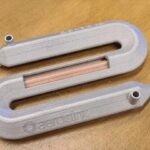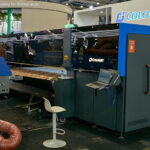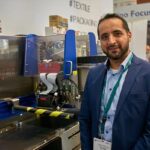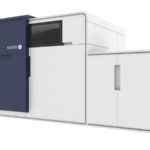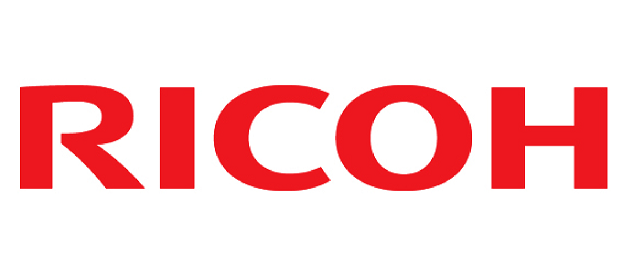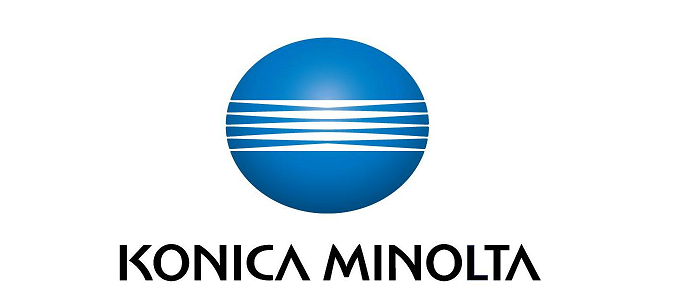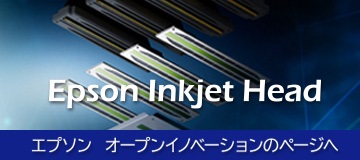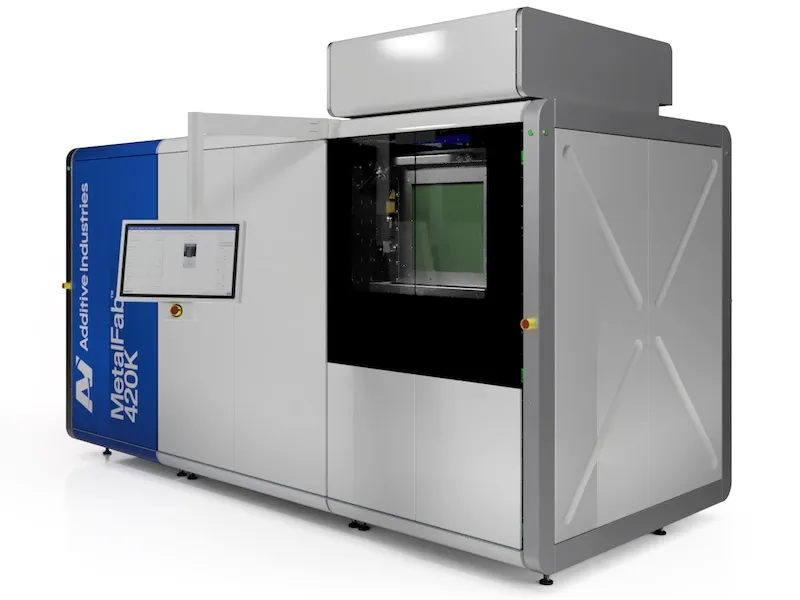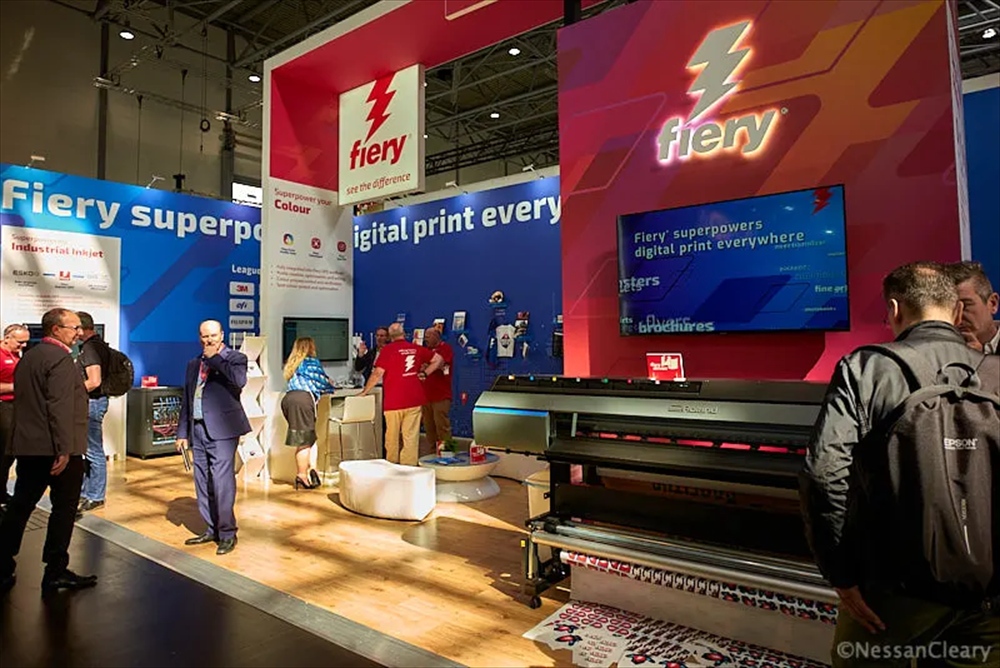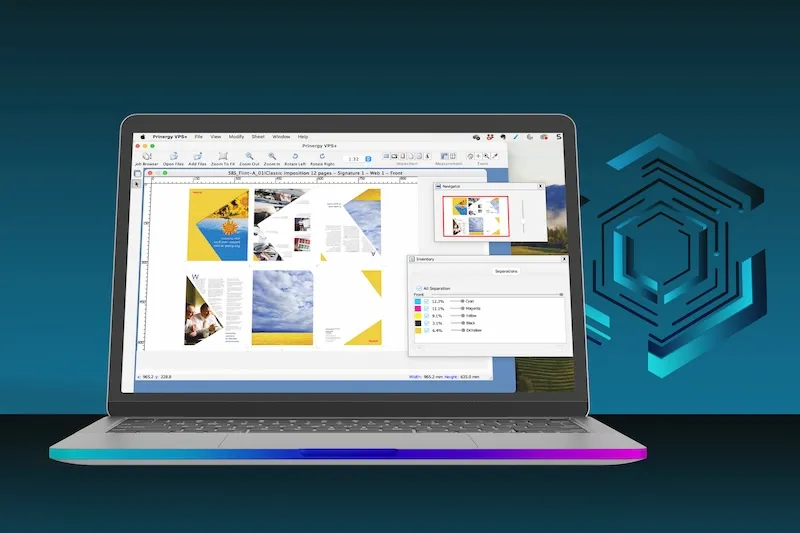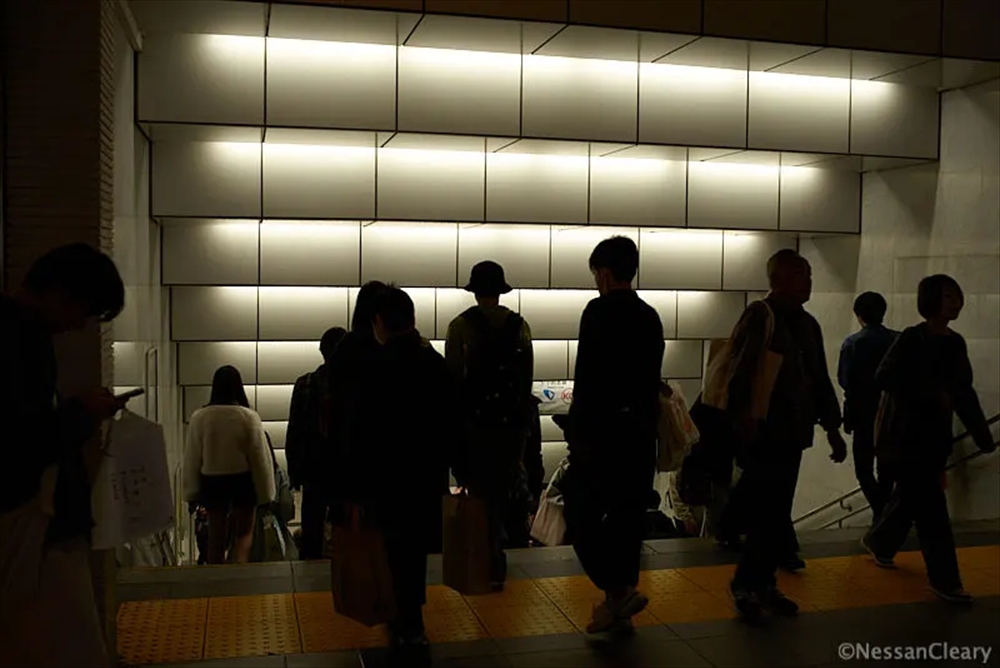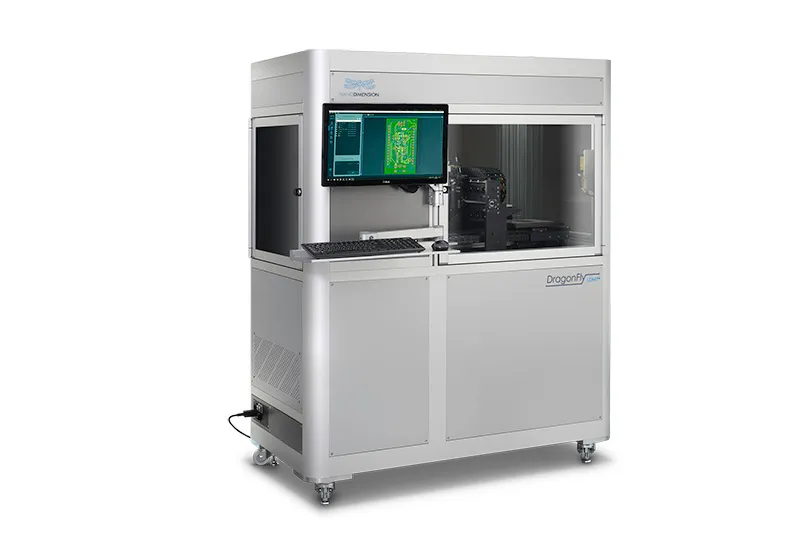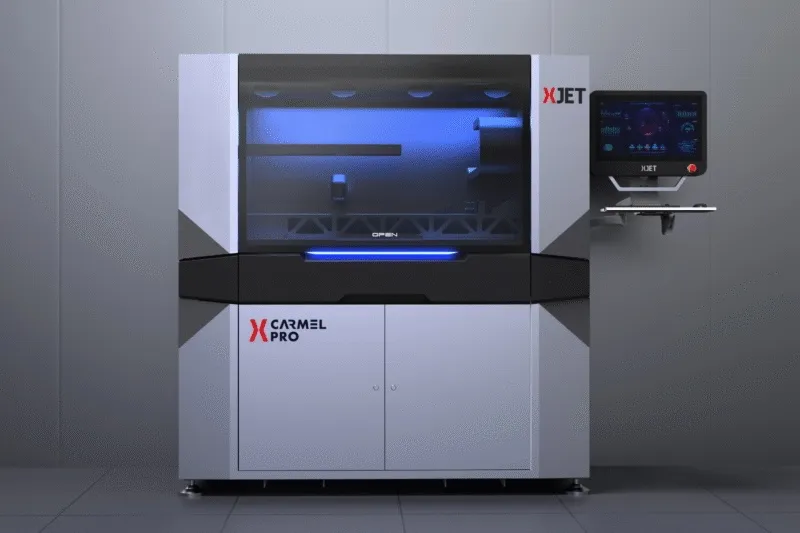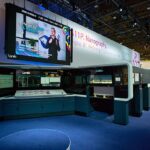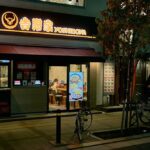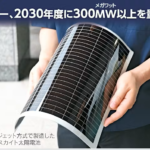- 2019-11-7
- Nessan Cleary 記事紹介
私の記事の愛読者の皆さんは、インクジェット技術に興味がある人に素晴らしいフォーラムを提供しているインクジェット会議、または The IJCのためにデュッセルドルフにいたことが主な理由で、先週、私は記事を投稿できなかったことに気付いているかもしれません。
The IJC pt1: new heads from Kyocera and Epson
Regular readers may have noticed that I was unable to post any stories last week, mainly because I was in Düsseldorf for the Inkjet Conference, or IJC, which offers an excellent forum for anyone interested in inkjet technology.
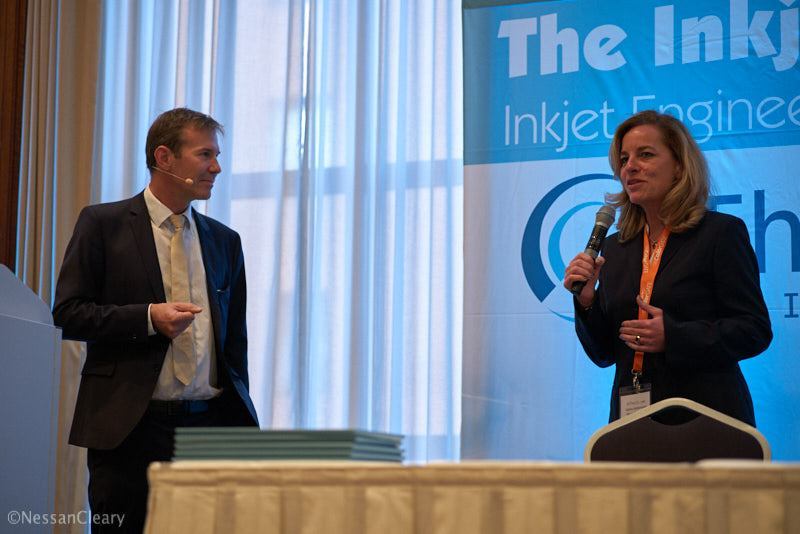
Steve Knight of The IJC with Sabine Geldermann, director of Drupa and head of print technologies for Messe Dusseldorf.
The IJCの Steve Knight氏と Drupaのディレクターであり、メッセデュッセルドルフの印刷技術責任者である Sabine Geldermann女史
The IJCの共同設立者のひとりである Steve Knightは、聴衆はランダムな人々の集まりではなく、誰もがインクジェットの世界に深く関わっていることを指摘してイベントを開始しました。そして「これは非常に技術的な会議であり、この部屋には膨大な知識があります。」と付け加えました。確かに事実であり、非常に詳細なプレゼンテーションの集中プログラムで、かなり鋭い質問で締めくくられました。インクジェットの世界は非常に小さく、ほとんどの人が少なくとも他の参加者の一部を知っていたので、ネットワーキングにとっては十分な時間が確保されていました。それはこのイベントのプレゼンテーション自体と同じくらい重要なことです。(■ 大野註:まさしく、ネットワーキング「こそ」がコンファレンスの最重要部分と私は考えています)
Steve Knight, one of the co-founders behind the IJC, kicked off the event by pointing out that the audience was not a random collection of people but that everyone was heavily involved in the inkjet world, adding: “It’s a very technical conference and there’s a huge amount of knowledge in this room.” This certainly proved to be the case, with an intensive programme of highly detailed presentations, rounded off with some fairly incisive questions. There was plenty of time set aside for networking, which is just as important to this event as the presentations themselves, given that the inkjet world is fairly small and most people knew at least some of the other participants.
ステージに登場した最初の人の一人は、Drupaのディレクターであり、メッセデュッセルドルフの印刷技術責任者である Sabine Geldermann女史でした。彼女は、毎年インクジェットプレスが Drupaで大きな役割を果たしていることを指摘しました。2020年は、メッセデュッセルドルフで開催されるふたつの大きなショー、Drupaと InterPackで、インクジェットの世界にとって重要な年になることは誰もが知っています。おそらくこのことが、多くの主要なプリントヘッドベンダーまたはその代理人が The IJCで講演したいと思った理由でもあるでしょう。
One of the first people to take to the stage was Sabine Geldermann, director of Drupa and head of print technologies for Messe Dusseldorf, who pointed out that year on year inkjet presses are playing a bigger part at Drupa. We all know that 2020 will be a significant year for the inkjet world with two big shows, Drupa and InterPack, both held at Messe Dusseldorf. This is perhaps also why so many printhead vendors were keen to speak at the IJC, with presentations from all of the major printhead vendors or their representatives.
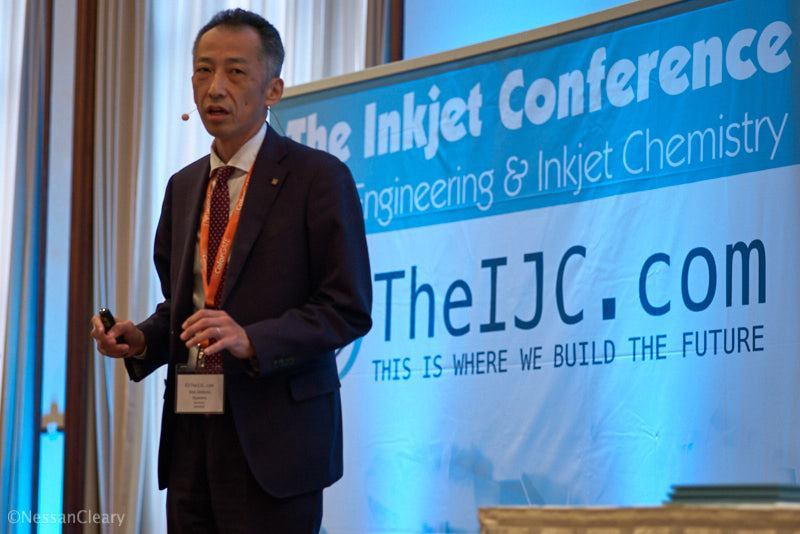
Shin Ishikura, manager of Kyocera’s Inkjet Design Centre
京セラインクジェットデザインセンターのマネージャー、石倉慎氏
私の考えでは、最も重要な発表のひとつは、京セラのインクジェットデザインセンターのマネージャーである石倉慎氏からのものでした。彼は、2005年に IJP 1.0プリントヘッドを最初に発表したことから、京セラがシングルパス印刷のパイオニアのひとつであることを思い起こさせることから始めました。彼は次のように付け加えました:「インクジェットマシンの大部分はまだスキャン中だったので、多くの人が私たちに賭けたわけではなく、シングルパス印刷の概念にかなり懐疑的でした。 そのため、私たちの技術が少数の早期採用者によって実証された Drupa 2008まで待たなければなりませんでした。」
To my mind, one of the most significant announcements came from Shin Ishikura, manager of Kyocera’s Inkjet Design Centre. He started off by reminding us that Kyocera was one of the founding pioneers of single pass printing, having first announced its IJP 1.0 printhead back in 2005. He added: “When we started the majority of inkjet machines were still scanning so not many people bet on us and they were rather sceptical of the concept of single pass printing. So we had to wait until Drupa 2008 when our technology was proven by a small number of early adopters.”
京セラはふたつのモデルから始め、その後ラインアップを拡大して、さまざまな産業用アプリケーションを提供しています。石倉氏によると、それらはインク種類によって特徴づけられています。彼は、より多くのスループット、より多くのインクレイダウン、より堅牢性、より少ない液滴量の変動、そしてより広い操作ウィンドウに対する一般的な要求があると指摘し、次のように付け加えました。「これで、第2世代のIJP 2.0の準備が整いました。」
Kyocera started with two models and has since expanded its line up to supply a variety of industrial applications, which Ishikura says are mostly characterised by the jetting fluid. He notes that there’s a general requirement for more throughput, more laydown, more robustness, less variation and a wider operating window, adding: “Now we are ready with the second generation, IJP 2.0.”
新しいプラットフォームには、共振の問題に対処する剛性のあるボックスフレーム構造、ボックスフレーム内に構築された効率的なモノリシックバルクピエゾアクチュエーター、ダブルチャネルを使用して供給と戻りの間の圧力を均等化する補完的な再循環フローチャネルのオプションなど、三つの主要な要素があります。
There are three main elements to the new platform, including a rigid box frame structure that counters resonance issues, an efficient monolithic bulk piezo actuator built inside the box frame, and an option for a complimentary recirculation flow channel, which uses a double channel to equalise the pressure between the supply and return.
まず、水性インク用の 1200 dpiバージョンを含む二つの異なるモデルがあります。これには、108.27mmの印刷幅にわたって 5116ノズルが配置されています。80 KHzの最大駆動周波数で 1〜2.8plの液滴を生成できます。再循環を特徴とし、非吸収性メディア用に最適化されています。FPGAノズル調整機能が含まれており、ノズルの欠落やノズル間の液滴量の変動などの問題を自動的に検出し、RIPからの入力を必要とせずにこれらを修正できます。
To start with, there will be two distinct models, including a 1200 dpi version for aqueous inks, which has 5116 nozzles arranged across a 108.27mm print width. It can produce drops from 1 to 2.8pl with a maximum jetting frequency of 80 KHz. It features recirculation and has been optimised for non-absorbable media. It includes FPGA nozzle adjustment, which can automatically detect problems such as missing nozzles or variations in drop volume between nozzles and correct these without requiring any input from a RIP.
京セラには、水性インク用の 600dpiエンドシュータープリントヘッドもあります。これには 2560個のノズルがありますが、最大発射周波数 30KHzで 5〜18plのドロップを生成します。京セラは、これがより広い操作ウィンドウに対してより柔軟であり、既存のモデルよりも約 25〜50パーセント多くのインクを配置できると述べています。
Kyocera also has a 600dpi end-shooter printhead, also for aqueous inks. This has 2560 nozzles, but produces 5-18pl drops at a maximum firing frequency of 30KHz. Kyocera says this is more flexible for a wider operation window and will be able to lay down more ink than existing models by roughly 25 to 50 percent.
石倉氏は、まもなくリリース予定の、さらに二つのプリントヘッドの詳細もシェアしました。これらには、より大きなドロップボリュームを生成できる 1200 dpiヘッドの UVバージョンと、同じく UVインクを扱える、再循環を備えた 600 dpiヘッドのバリエーションが含まれます。彼は、これらのヘッドに最大 9つの波形を実装できると述べています。
Ishikura also shared details of two further printheads due to be available shortly. These include a UV version of the 1200 dpi head capable of producing a higher drop volume, and a variation of the 600 dpi head, complete with recirculation that’s also able to handle UV inks. He says that up to nine waveforms can be implemented on these heads.
■ 石倉さんは大野主催の Japan Inkjet Business Conference 2020にも登壇頂きます。
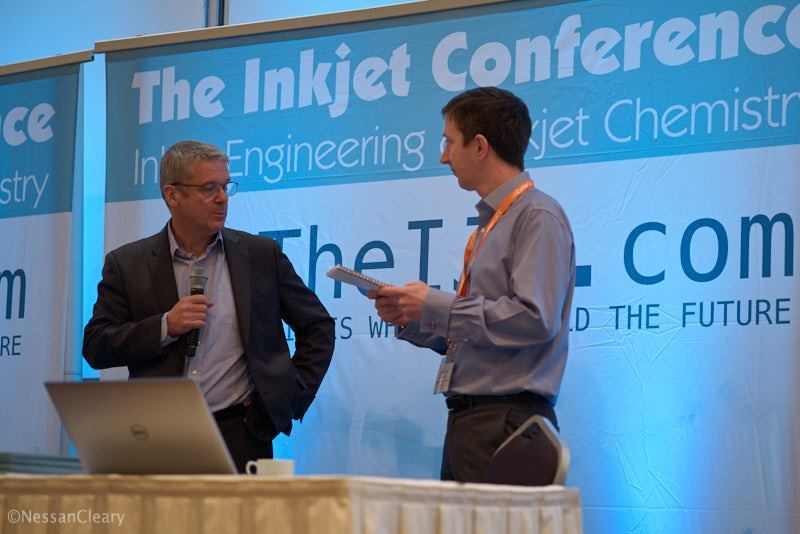
From left: Duncan Ferguson, vice president of professional printing and robotics for Epson Europe, with Ronan Daly, senior lecturer in science and technology of manufacturing at Cambridge University.
左から:エプソンヨーロッパのプロの印刷およびロボット工学担当副社長 Duncan Fergusonと、ケンブリッジ大学の製造技術の上級講師である Ronan Daly
Epson Europeのプロ向け印刷およびロボット工学担当副社長の Duncan Fergusonは、最初の設計から現在の第 3世代 PrecisionCoreヘッドまでの Epsonのプリントヘッドの進化について説明しました。彼は、PrecisionCoreには 2つの大きな利点があると説明し、次のように説明します。「ひとつ目は、非常に高い出射性能です。幅広いインク用途があり、家庭やオフィスから産業まで複数の用途に使用できます。2番目の大きな利点は、高密度で高精度であるため、さまざまな材料で使用でき、長寿命で耐久性が得られることです。」
Duncan Ferguson, vice president of professional printing and robotics for Epson Europe, described the development of Epson’s printheads from their first design to the current third generation PrecisionCore heads. He says that the PrecisionCore has two big advantages, explaining: “The first is a very high jetting performance. It has a wide ink application and can be used for multiple uses from home and office to industrial. The second big advantage is the high density and high precision that enables it to work with a wide variety of materials and gives it durability for a long life span.”
Epsonには、I-800、I-1600、I-3200、S1600など、まもなく発売予定の新しい PrecisionCoreヘッドが多数あります。私はすでに S1600をここで取り上げました。S1600は S字型ヘッドであり、本質的には今年の FESPAショーで発表された既存の S3200のバリエーションです。
Epson has a number of new PrecisionCore heads due out shortly, including the I-800, I-1600, I-3200 and S1600. I’ve already covered the S1600, which is an s-shaped head and essentially a variation on the existing S3200 that was announced earlier this year at the Fespa show.
PrecisionCoreテクノロジーの中心となるのは、2列のノズルがあり、各ノズルが 400ノズル、合計で 800で、33.8mmラインに密に詰められたチップであり、1インチあたり 600ノズルの有効密度が得られます。Epsonは、これらのチップのいくつかを組み合わせて、さまざまなプリントヘッドを作成します。したがって、Sシリーズは、複数のヘッドを一列に並べてプリントバーを作成できるように設計されており、チップを2列にずらして、異なるヘッドを簡単にスティッチすることができます。
The heart of the PrecisionCore technology is a chip, with two rows of nozzles, each having 400 nozzles, so 800 in total, tightly packed together on a 33.8mm line, which gives an effective density of 600 nozzles per inch. Epson combines several of these chips together to create its various printheads. Thus the S-series have been designed so that multiple heads can be slotted together in a line to create a printbar, with the chips staggered in two rows to make it easier to stitch the different heads together.
対照的に、Iシリーズは角張ったヘッドで、チップが並んで配置されており、有効な印刷幅は 1.33インチです。これらのヘッドは通常、ワイドフォーマット印刷などのスキャンアプリケーションで使用されます。そのため、I-800には 800個のノズルを持つ単一のチップがありますが、各ノズル列は個別にアドレス指定できるため、600dpiの 1色または 300dpiの解像度の 2色を選択できます。
In contrast, the I-series are squarish heads with the chips arranged side by side giving them an effective print width of 1.33ins. These heads are typically used in scanning applications such as wide format printing. So the I-800 has a single chip with 800 nozzles but each of the nozzle rows can be addressed separately so that there’s a choice of one colour at 600dpi or two colours at 300dpi resolution.
I-1600は 2つのチップで構成され、600dpiで 1色または 2色、または 300dpiで 4色を使用できます。I-3200には 4つのチップがあり、合計 8つのノズル列があり、1つ、2つ、または 4つの色にすべて 600dpiで構成できます。興味深いことに、 I800ヘッドは水性および溶剤インクのみをサポートしていますが、Iおよび Sシリーズの残りのヘッドは、水性および溶剤と同様に UVインクもサポートしています。
The I-1600 consists of two chips and can be used with one or two colours at 600dpi or four colours at 300dpi. The I-3200 has four chips, with eight nozzle rows in total, and can be configured for one, two or four colours, all at 600dpi. Interestingly, the I800 heads only support aqueous and solvent inks whereas the rest of the I and S-series heads also support UV inks as well as aqueous and solvent.
Furgusonは、エプソンの古い MACHシリーズである F1080の新しいヘッドの詳細もシェアしました。これは、すべての MACHシリーズと同様に 180dpiのヘッドですが、1つ、3つ、または 6つのカラーチャネルを構成できます。水性インクと溶剤インクの両方を使用しますが、UVは使用しません。このシリーズには、以前の F1440と L1440の新しい UV対応バージョンも含まれています。これらは 5月に FESPAショーの記事で既に取り上げたもので、どちらも最大 8色まで使用できます。
Ferguson also shared details of a new head in Epson’s older MACH range, the F1080. This is a 180dpi head, as with all the MACH range, but can be configured with one, three or six colour channels. It will take both aqueous and solvent ink, but not UV. This range also includes the older F1440 and the new UV-compatible version of the L1440, which I’ve already covered back in May at the Fespa show, both of which can take up to eight colours.
今後数週間にわたって The IJCからさらにレポートを投稿します。ほぼすべてのプレゼンテーションに何か有用なものがあり、すべてを説明するには時間がかかります。しかし Landaがこれまでに 22台のナノグラフィック印刷機を設置し、ほとんどが枚葉紙で、一部はロール紙機であることなど、いくつかの詳細が際立っています。この数には、まだ公開されていないかなりの台数も含まれています。
I’ll post some more reports from the IJC over the next few weeks. Almost all of the presentations had something useful and it will take time to go through them all. But some details stand out, such as Landa having installed 22 nanographic presses to date, mostly sheetfed, but with some webfed. This number also includes quite a few that have not yet been made public.
それまでは、11月は忙しい月になります。InPrintショーのためにミュンヘンに、Formnextのためにフランクフルトに来て、これらのイベントで私と会いたい人は連絡を頂くことをお勧めします。(■ 大野は会います(笑))
In the meantime, November is going to be a busy month as I’ll also be in Munich for the InPrint show and Frankfurt for Formnext and I’d encourage anyone that wants to meet with me at these events to get in touch.



